Ilkeston Cam on Holiday in ....

w/e 03 September 2023
All of this week's pictures were taken with a Nikon D3300.
5 - At The Top Of The Steps In Whitby
Whilst I was exploring around the foot of the steps Adam and
Tracy ascended all 199 and came back with more photos of which
these are just a few.
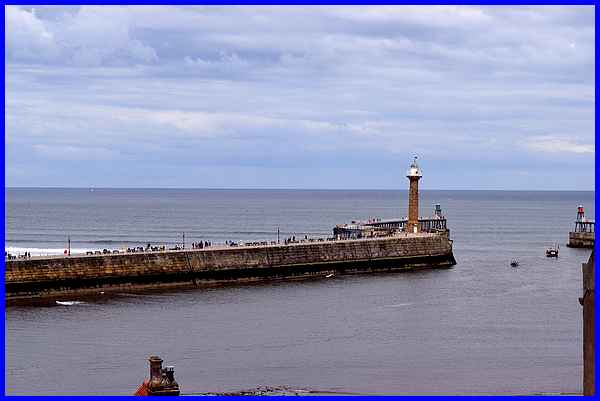
Pausing part way up the steps they had a similar view of the
West Pier, lighthouse and pier extension but from a higher altitude
than my similar view from lower down. The end of the East Pier
extension that forms the pincer-like entrance to the harbour
was also visible begging the question, with piers and extensions,
where does the River Esk end and the North Sea begin?
|
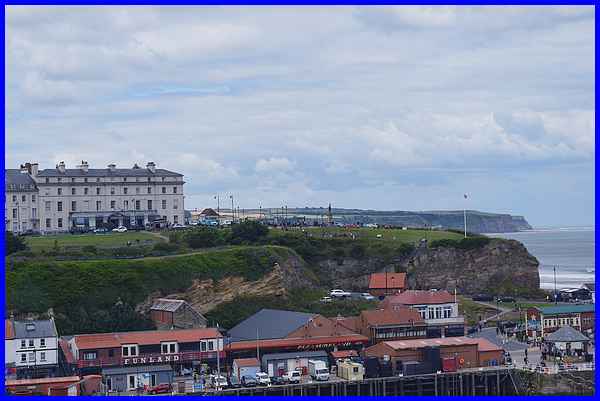
Again from the higher position, the view across the river to
the headland opposite reveals not only the Whalebone Arch but
also all of the Captain Cook Memorial Site complete with statue.
|

We would later walk along Pier Road on the west side of the river
but from high on the 199 Steps the West Cliff Church on Skinner
Street was prominent in the town. The church is also known as
the Whitby Christian Fellowship.
|
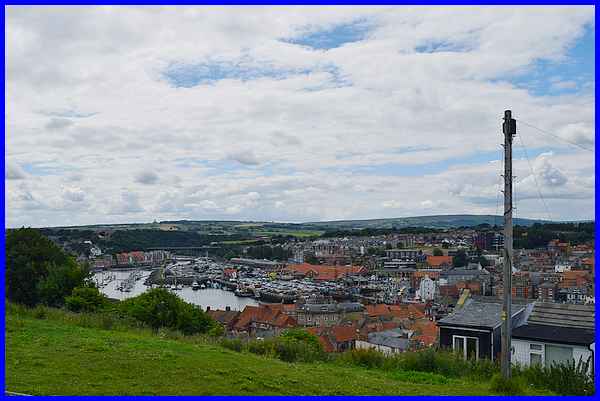
When we first arrived in Whitby and parked on Endeavour Wharf,
we'd looked up to St Mary's Church and the other buildings near
Whitby Abbey. Now from the top of the 199 Steps this is the opposite
view back down to the wharf and the River Esk Valley.
|
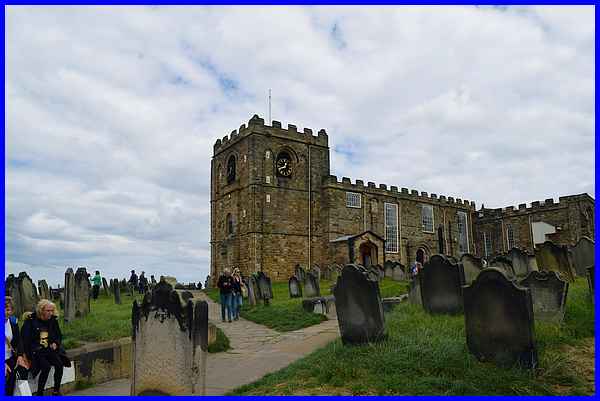
And this is the 12th century Church of St Mary surrounded by
the cemetery that reader's of Bram Stoker's novel "Dracula"
will be familiar with.
|
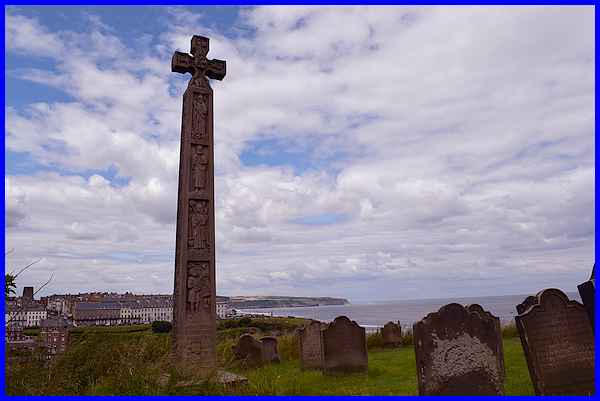
Among the headstones in the churchyard is the 20 foot high monument
called Caedmon’s Cross. This is a Victorian-style (erected
1898) Celtic cross commemorating a 7th century poet who lived
for much of his life in St Hilda’s monastic community, a
predecessor of the abbey.
|
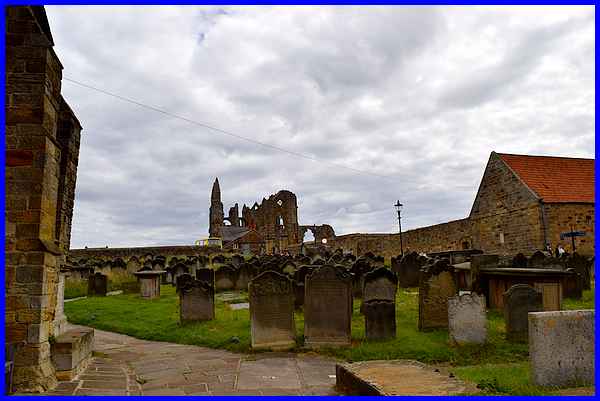
The ruins of the abbey lie beyond the churchyard. It was founded
in the 7th-century as a Christian monastery and later became
a Benedictine abbey but suffered the same fate in 1539 as many
other religious institutions during the reign of Henry VIII and
the Dissolution of the Monasteries. Now a Grade 1 listed building
the ruins still serve as a landmark for vessels out in the North
Sea.
|

After the dissolution the Abbey ruins and some of the land surounding
them were acquired by Sir Hugh Cholmley. It was on that land
between the Abbey and St Mary's Church the Cholmley House was
built which has seen many alterations during the 1600s. It now
houses a Visitor Centre, museum and shop. The site is now under
the jurisdiction of English Heritage and their website contains
a wealth of information.
|
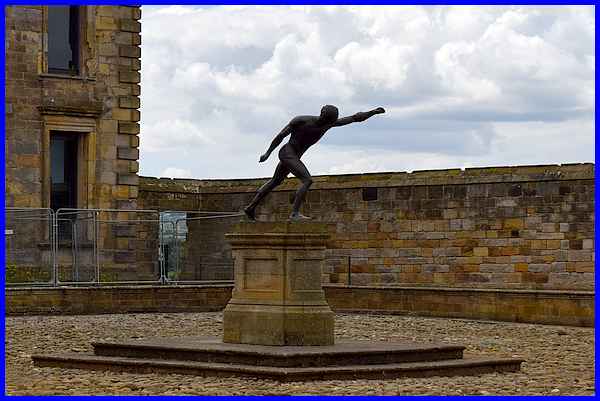
The courtyard in front of Cholmley House was restored by English
Heritage and is known as the Stone Garden. Since 2009 when it
was unveiled, the courtyard now contains the "Whitby Gladiator"
statue which is a replica of the "Borghese Gladiator"
sculpture displyed in the Louvre, Paris.
|
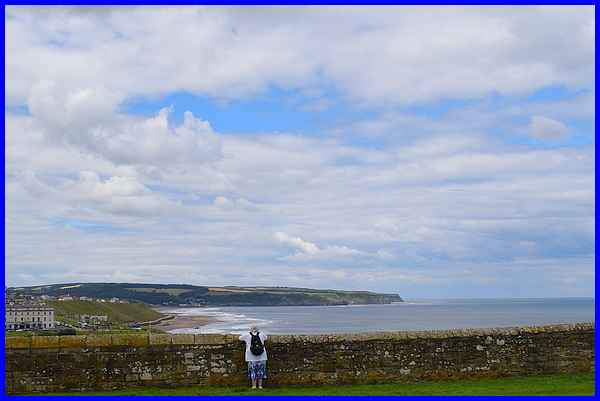
As fascinating as the history is, it's still the long shadow
of the fictional character that hangs over the area so before
returning down the 199 Steps, there's still time to survey the
North Yorkshire coastline that Dracula still inhabits.
|











